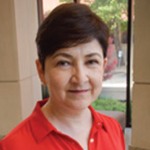Study Findings
Epidemiology
Dr. Rasmussen and colleagues found very few African Americans in the Sjögren’s syndrome cohort, about 3% of the group. “The proportion was a lot lower than what would have been expected based on the population of the state of Oklahoma, which is about 7% African American,” says Dr. Rasmussen.
In contrast, the group found a higher percentage than expected of Sjögren’s syndrome study participants were of Native American descent. Though Native Americans make up about 12% of the population in Oklahoma (and about 1.5% of the nation as a whole), about 25% of subjects in the cohort were Native Americans.
To control for possible discrepancies in socioeconomic status and access to care, the researchers decided to contrast these results with those from a large lupus cohort that recruits patients from the same sources, background and geographic area.
“We looked at whether they had fewer African American patients with lupus, but they didn’t,” says Dr. Rasmussen. African Americans made up roughly 23% of the lupus cohort. Native Americans made up roughly 13% of the lupus cohort. “That helped us control for differences in access to care and socioeconomic factors in the Sjögren’s syndrome subjects,” she adds.
Disease Presentation in Native Americans

Dr. Rasmussen
The researchers found some important differences in disease presentation in the Native American Sjögren’s syndrome subgroup. “When we look at the classical features of Sjögren’s syndrome—such as how dry their eyes or mouth are—they were very mild in comparison to whites,” explains Dr. Rasmussen.
Yet the Native Americans showed higher levels of disease activity, as assessed by the ESSDAI (EULAR Sjögren’s Syndrome Disease Activity Index), than whites. “The non-classical symptoms that affect other tissues in Sjögren’s syndrome—the extraglandular manifestations—were observed at higher rates in Native Americans.”
Compared with other races, Native Americans reported more joint involvement, fatigue, pain and general malaise. They also had lower rates of positivity for anti-SSA/Ro and anti-SSB/La antibodies.
Lymphoma Risk in African Americans
Multiple autoimmune rheumatic diseases are associated with an increased risk of hematologic malignancies, particularly non-Hodgkin’s lymphoma. The highest risk has been observed in Sjögren’s syndrome, and past research has identified certain factors that serve as markers of increased risk. These include persistent enlargement of the salivary glands, lymphadenopathy, hypergammaglobulinemia, cryoglobulinemia and hypocomplementemia, among others.4
The researchers did not identify higher rates of existing lymphoma in any group in this single cross-sectional study, which lacked the statistical power to reveal any such differences. However, compared with the white and Native American subgroups, African American patients had higher rates of hypergammaglobulinemia (OR 1.39), elevated erythrocyte sedimentation rate (OR 3.95) and parotid enlargement (OR 4.40).
Dr. Rasmussen says, “African Americans, in spite of having a low rate of Sjögren’s syndrome, have markers that suggest that it might be aggressive and that they might have a higher risk of lymphoma.” Thus, these patients warrant closer monitoring.

